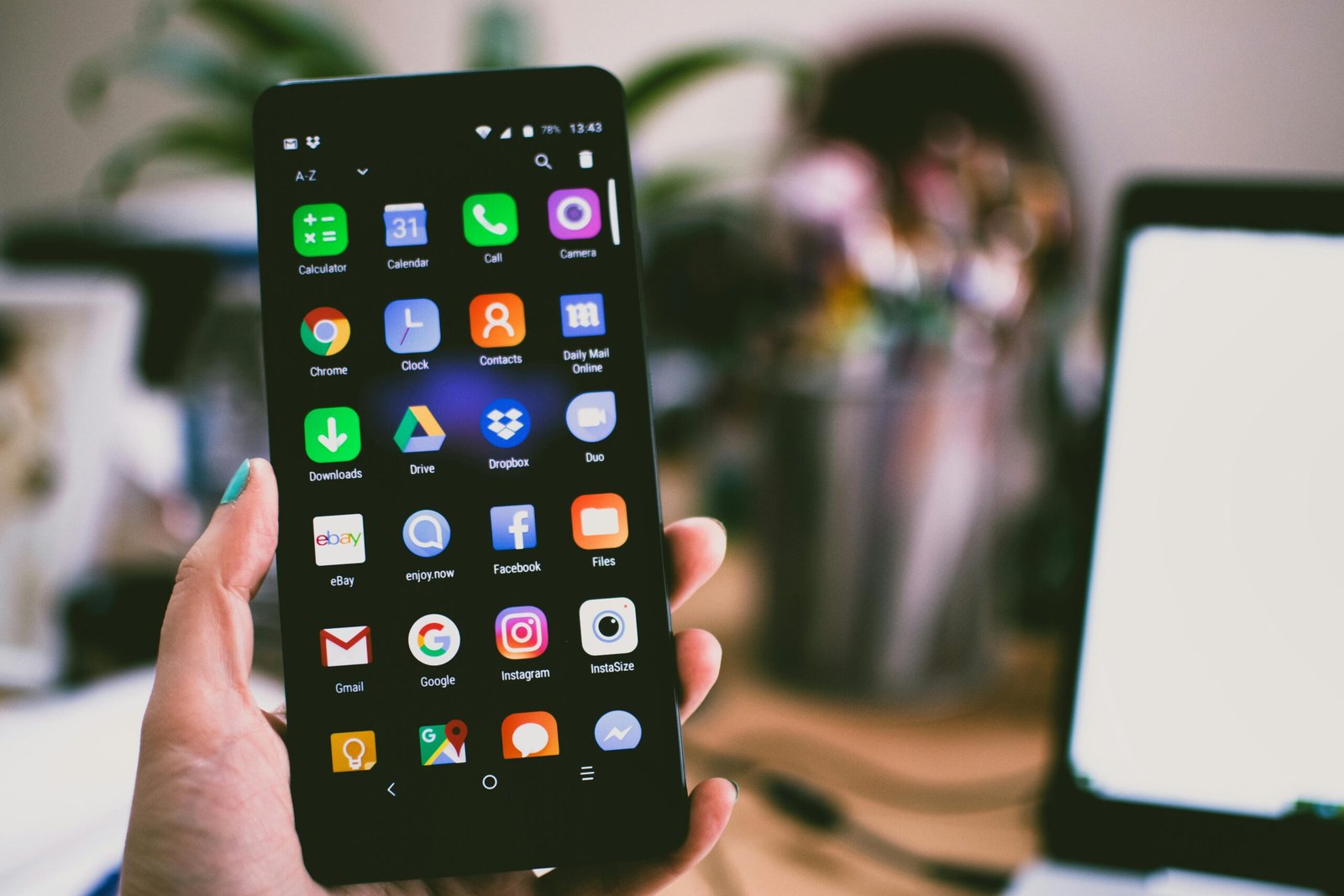Smartphones have come a long way since their inception in the early 2000s. What started as a simple communication tool has evolved into a central part of daily life, influencing everything from how we work to how we entertain ourselves. As we look toward 2025, the smartphone is poised for even more radical transformations. In this article, we’ll explore the major trends shaping the future of smartphones, from advancements in hardware and software to the impact of new technologies.
Whether you’re a tech enthusiast or just curious about the next big thing in mobile tech, the evolution of smartphones in 2025 is sure to impress.
1. Foldable and Flexible Displays: The Future of Screens
One of the most exciting developments in smartphone design is the rise of foldable and flexible displays. What was once a concept straight out of science fiction has now become a reality. In 2025, these devices will likely be much more commonplace, offering users the ability to fold, roll, or bend their phones into new forms.
What to expect from foldable phones in 2025:
- Larger Screens in a Compact Form: Foldable smartphones will allow users to enjoy larger screens while maintaining portability. Expect phones that unfold to reveal a tablet-like display, ideal for media consumption, gaming, or multitasking.
- Durability Improvements: Early foldable devices struggled with durability, but by 2025, manufacturers will have refined the technology to make foldable phones more robust, with more flexible, scratch-resistant materials.
- Rollable Displays: Beyond folding, rollable phones will allow users to extend their screen like a scroll. This technology could lead to phones that adjust their size depending on the user’s needs—compact for portability, but large when you need more screen real estate.
These foldable and flexible phones will change the way we interact with mobile devices, making them more versatile and suited to a wide range of activities.
2. 5G and Beyond: Lightning-Fast Connectivity
The rollout of 5G has already begun, but by 2025, it will be fully integrated into smartphones around the world. The faster and more reliable speeds of 5G will revolutionize how we use our phones, making everything from video streaming to virtual reality more seamless.
What will 5G mean for smartphone users?
- Ultra-Fast Downloads and Streaming: With speeds up to 100 times faster than 4G, users will be able to download full movies in seconds, stream ultra-high-definition content without buffering, and experience a much smoother internet experience in general.
- Improved Remote Work and Collaboration: As 5G supports lower latency and more stable connections, remote work and video conferencing will see significant improvements, making it easier to collaborate on the go.
- Next-Level Gaming and Augmented Reality (AR): The power of 5G will enable real-time cloud gaming and more immersive augmented and virtual reality experiences. Expect smoother gameplay, faster load times, and a whole new level of interaction with AR apps.
Beyond 5G, some experts are predicting the development of 6G by the late 2020s, which could offer even faster speeds and open the door for entirely new applications, such as real-time holograms or fully integrated AI systems.
3. AI-Powered Smartphones: Smarter Than Ever
Artificial Intelligence (AI) has already begun to play a major role in smartphones, with features like voice assistants, predictive text, and camera enhancements. However, in 2025, AI will be even more deeply integrated into the smartphone experience, with new features and capabilities that are more personalized and intuitive.
What AI will bring to smartphones in 2025:
- Personalized User Experience: AI will adapt to your habits and preferences, providing more personalized suggestions for apps, content, and notifications. It could even suggest things like when to charge your phone based on your usage patterns.
- Smarter Photography and Video: AI will continue to improve camera performance by automatically adjusting settings based on the environment and subject. Expect even more advanced capabilities, like real-time background removal, AI-powered video editing, and automatic scene recognition for better photos.
- Advanced Voice Assistants: AI-driven virtual assistants will become more conversational and context-aware, allowing for more natural interactions. They’ll be able to manage multiple tasks at once, anticipate your needs, and provide more accurate responses.
AI integration will make smartphones much more responsive, reducing the need for manual input and making everyday tasks easier and faster.
4. Enhanced Biometric Security: Face, Fingerprint, and Beyond
Security is a top priority for smartphone manufacturers, and by 2025, we’ll see major improvements in biometric authentication methods. While facial recognition and fingerprint scanning have already become standard, new, more secure forms of authentication will emerge.
The future of biometric security:
- 3D Face Recognition: While current facial recognition technology is based on 2D mapping, 3D face scanning will become more common, offering greater accuracy and security by mapping the face’s depth and features.
- Under-Display Fingerprint Scanners: The next generation of fingerprint scanners will be even more reliable, with more surface area for scanning and enhanced accuracy, making it easier to unlock your phone in any situation.
- Palm and Vein Scanning: For even more security, expect to see palm vein scanning integrated into smartphones. This technology analyzes the unique pattern of veins in your hand, making it nearly impossible to spoof.
With these advanced biometric systems, your phone will not only be more secure but also more convenient to use, offering seamless access without the need for passcodes or PINs.
5. Longer Battery Life and Faster Charging
Battery life has always been a sticking point for smartphones, but advances in battery technology are poised to drastically change this in 2025. With the demand for more power-hungry applications like 5G and AR, manufacturers are investing in new battery technologies that will last longer and charge faster.
Expectations for smartphone batteries in 2025:
- Solid-State Batteries: These batteries are expected to replace traditional lithium-ion batteries, offering greater energy density, faster charging, and longer life. Solid-state batteries are also safer, as they eliminate the risk of overheating and explosion.
- Super-Fast Charging: New charging technologies could allow your phone to be fully charged in under 30 minutes, even if the battery is almost dead. Wireless charging will also see improvements, with more powerful and efficient charging pads.
- Battery Life Optimization: With AI and machine learning, smartphones will better manage power usage, only using battery when necessary and reducing consumption in the background.
These improvements will make battery anxiety a thing of the past, allowing you to use your smartphone all day without constantly searching for an outlet.
6. Integration of Augmented Reality (AR)
Augmented Reality (AR) is expected to be a major feature of smartphones by 2025, with more apps incorporating AR for entertainment, shopping, and practical uses. While AR is already available in some apps, the next generation of smartphones will offer more immersive and interactive AR experiences.
AR capabilities in 2025:
- Virtual Try-Ons: Shopping will be revolutionized with AR try-ons for clothes, makeup, and furniture. You’ll be able to see how items look on you or in your home in real-time before making a purchase.
- Enhanced Navigation: AR will improve GPS navigation, overlaying directions onto the real world through your phone’s camera. You’ll see step-by-step directions as you walk or drive, with clear markers on streets and landmarks.
- Gaming and Entertainment: Expect more AR-based games that blend the virtual world with your real surroundings, creating an interactive experience that goes beyond what we currently have with Pokémon GO.
AR will be integrated so seamlessly into smartphones that it will become a regular part of daily life, providing both entertainment and practical applications.
7. Sustainability and Eco-Friendly Design
As concerns about the environment continue to grow, smartphone manufacturers will place greater emphasis on sustainability in 2025. From using eco-friendly materials to reducing electronic waste, smartphones in 2025 will be designed with the planet in mind.
Sustainable trends in smartphones:
- Recycled Materials: Expect to see more smartphones made from recycled plastics, metals, and rare earth elements, reducing the need for mining and manufacturing new materials.
- Modular Design: Modular phones, where individual components (like the camera, battery, and screen) can be easily swapped out or upgraded, will reduce the need for completely replacing the device every few years, thus decreasing electronic waste.
- Energy Efficiency: New smartphones will be designed to use less energy, even while supporting power-hungry features like 5G and AR.
By 2025, eco-conscious consumers will have more sustainable options, making it easier to enjoy cutting-edge technology without harming the environment.
Conclusion: The Smartphone of 2025 is Smarter, Faster, and More Immersive
The smartphones of 2025 will be nothing short of revolutionary. From foldable displays and AI-driven features to faster connectivity and enhanced security, the next generation of smartphones will offer more power, versatility, and user-friendliness than ever before. Whether it’s through more immersive AR experiences, longer-lasting batteries, or eco-friendly designs, smartphones will continue to evolve to meet the needs of the modern world.
As we move closer to 2025, it’s clear that the smartphone will continue to be a central hub in our daily lives, connecting us to information, entertainment, and each other in ways we’ve only begun to imagine.
FAQs
1. Will 5G be available everywhere by 2025?
By 2025, 5G will likely be widely available in major cities and many rural areas, but some regions may still be catching up. Expect continued global expansion and improved 5G infrastructure in the coming years.
2. Are foldable smartphones durable?
While early foldable smartphones had durability issues, improvements in design and materials are expected to make foldable devices much more robust by 2025. Manufacturers will likely focus on creating more flexible, scratch-resistant displays.
3. Will AI make smartphones more difficult to use?
Not at all! AI will actually make smartphones more intuitive and personalized. With smarter assistants and features that learn your habits, smartphones will become easier to use and more helpful over time.
4. What is the future of smartphone battery life?
With advancements in solid-state batteries and battery optimization technology, smartphone battery life in 2025 will be much longer and more efficient. Expect faster charging and more sustainable power management.
5. How will augmented reality change smartphone use?
AR will offer more interactive and immersive experiences, from virtual try-ons to improved navigation. By 2025, AR will be seamlessly integrated into daily activities, enhancing both entertainment and practicality.



